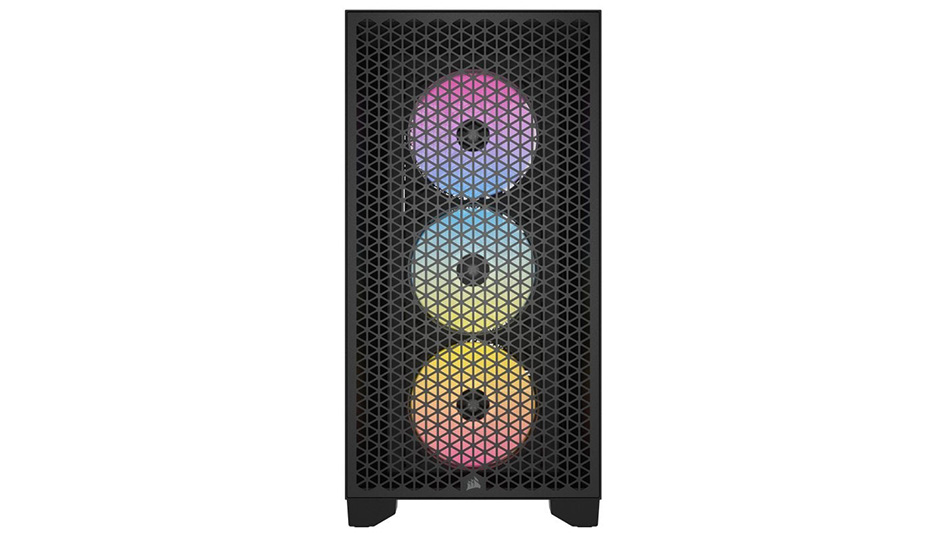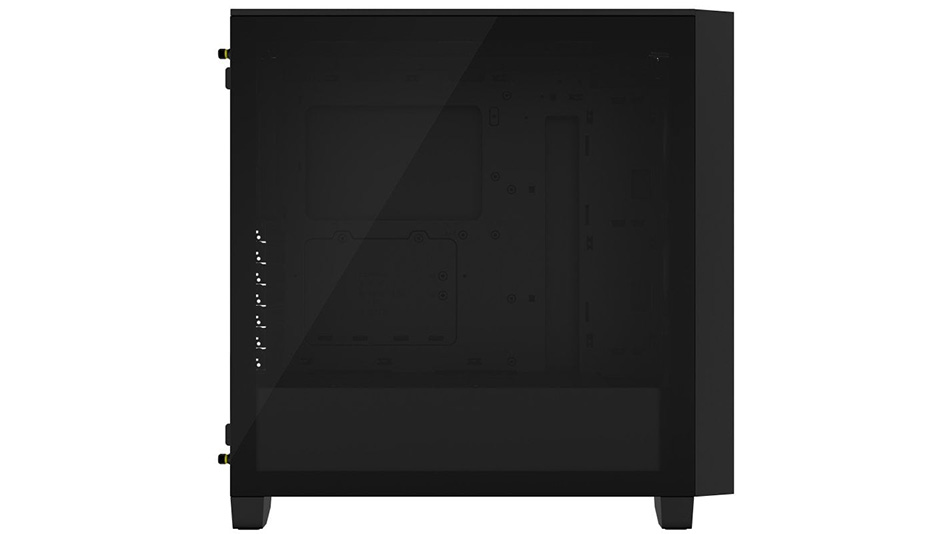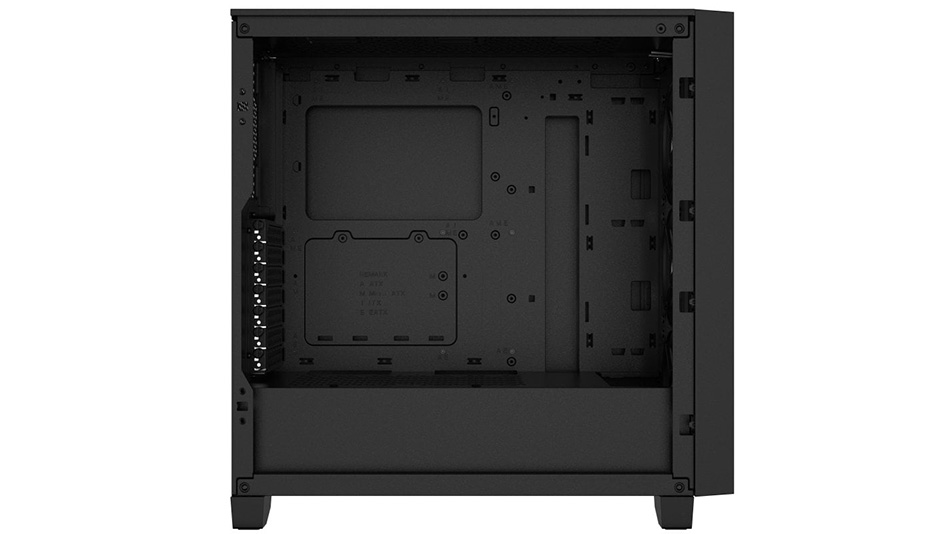The Corsair 3000D Airflow is positioned as a more affordable version of the popular 4000D Airflow. It retains many of the features that made its big brother so successful. With an affordable entry-level price, this case is clearly aimed at the mid-range configuration market. Let’s see what it actually offers and what type of build it’s suitable for.

Corsair 3000D Airflow, a compact and sleek case
The 3000D Airflow stands out for its understated and functional design. It measures 23 cm wide, 46.5 cm high, and 46.2 cm deep. It’s a compact ATX case with a perforated front panel, featuring Corsair’s signature triangular pattern. This design ensures excellent airflow while adding a modern aesthetic. The front panel is removable for easy access to the fan or radiator locations. It can accommodate three 120 mm fans, two 140 mm fans, or one 240 mm, 280 mm, or 360 mm radiator. It’s ideal to install the fans before mounting other components, as the screws are secured from inside the case.
Connectivity and ease of use
On the top panel, the Corsair 3000D Airflow offers a simple yet comprehensive user interface. There’s a power button, two USB 3.2 ports, a headphone jack, and a reset button. Internal cables are also well organized. Cable tie-down points are limited, which can make installation a bit tedious for beginners. The rear panel, which is removable via thumbscrews, offers decent cable management space. Corsair could have included more tie-down points to make things easier to organize. Still, there’s enough space for a standard power supply and a hard drive cage. Two 3.5-inch drives and two 2.5-inch SSDs can be installed if SSD brackets are available.
Corsair 3000D Airflow for compatibility and cooling
The 3000D Airflow supports ITX, micro-ATX, and ATX motherboards. While space is tight, there’s enough to accommodate most builds. The case includes a 120mm rear fan, and two 120mm or 140mm fans can be added to the top. A 240mm or 280mm radiator is also available. However, there’s no space for a 360mm radiator at the top. In terms of thermal performance, the 3000D Airflow excels at mid-range builds. The perforated design of the front panel contributes greatly to this efficiency.

